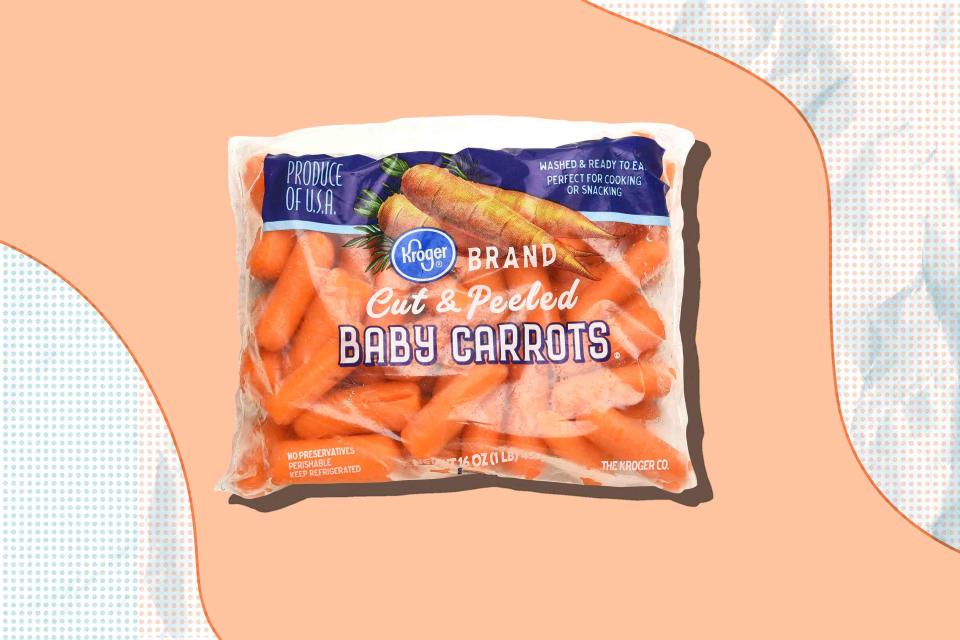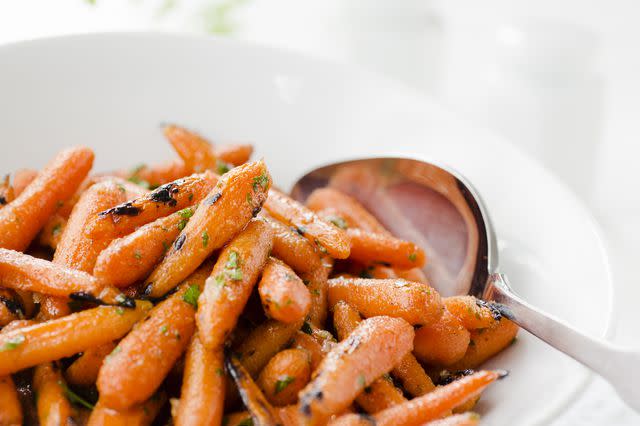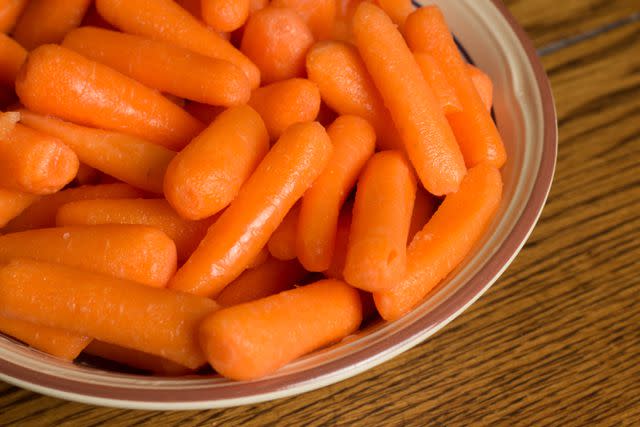The Only Way To Prevent Baby Carrots From Getting Slimy
Experts weigh in.

Simply Recipes / Sarah Crowder
Baby carrots are the candy of the vegetable world. They’re small, crunchy, and sweet—the perfect on-the-go snack. Of course, they’re hummus’ best friend too. I’ve always preferred them solo, especially mid-recipe testing (I create recipes for a living!) when I’ve eaten too much of the same thing and am in desperate need of something light and healthy.
Though baby carrots rarely make it past a week before I’ve snacked my way through the bag, I’ve found that with proper storage, they can last a whole lot longer. In fact, with a few trials and a little research, I finally figured out the best way to keep these babies crisp and fresh! Read on to learn all about this A+ snack and how to prevent them from turning slimy and gross.
What Are Baby Carrots?
Contrary to popular belief, not all baby carrots are cut from larger broken carrots. Instead, they’re often a specific variety that Dana Brennan, the vice president of Grimmway Farms (makers of Cal-Organic Baby Carrots) touts as a “sweeter, more tender” carrot with a thinner core than their larger counterparts. They can also be cut from larger carrot varieties harvested before they’ve reached maturity.
After harvest, baby carrots are washed with a small amount of chlorine mixed with water to help prevent food-borne pathogens. Though this method recently garnered criticism on social media, last year, Brennan assured Reuters readers that this process is both CCOF (California Certified Organic Farmers) and FDA-approved. In fact, according to a report published by Iowa State University, the amount of chlorine used to clean carrots is many levels below the allowable limit for drinking water.

Simply Recipes / Getty Images
What Is That White Stuff on Your Carrots?
Because baby carrots are peeled, they lose moisture more quickly than carrots sold with their skin intact. That white, flaky stuff (often referred to as “blush”) is a result of the baby carrot’s exterior drying out. This happens when the carrots are exposed to air for long periods of time when they're not tightly sealed in a bag or container.
Luckily, this white film is perfectly safe. If you can’t mentally stomach them at this point, cook them! They’re still good to eat, and that white film won’t be visible once the carrots are cooked.
Why the Inside of Baby Carrot Bags Are Always So Wet
Filtered tap water is often added to the bag of baby carrots to keep them hydrated during shipping and storage. You do not need to transfer this liquid into the container you’re storing your carrots in once the bag is opened. More on this below!

Simply Recipes / Getty Images
The Best Way To Store Your Baby Carrots
Once you’ve opened your bag of baby carrots, it’s best to transfer them into a resealable bag or container. Do not pour the water that pools on the bottom of the carrot bag into your container.
I prefer clear stackable ones because they’re easy to organize and allow me to see exactly how many carrots are left to eat when I open my fridge. An airtight seal keeps moisture in the carrots, preventing drying and maintaining freshness.
Though some people suggest adding a wet paper towel under the carrots to prolong freshness, I’ve found that this can sometimes add too much moisture, which eventually leads to slime and rot. The same goes for storing baby carrots submerged in water, which softens their texture. If you notice a significant amount of condensation in your container, drain it out to prevent sliminess.
How To Tell Baby Carrots Are Rotten
Carrots that have gone bad have an off smell, slimy exterior, and can sometimes be rubbery or bendy. Once they’ve reached this state, unfortunately, they can’t be brought back. To the compost bin they go!

